Do Positive Cash Flow Investment Properties Still Exist Today?
Do a search in Google, go to your local library or browse through the myriad of e-books online, and soon you’ll realise that there are a million theories out there on how to make a profit by investing in real estate. However, there are only two effective ways to make money investing in real estate.
The first way is capital appreciation. You sell the property in the future for more than your purchase price plus costs. We also call this investing for growth. There are two ways to achieve capital appreciation:
- Generic Growth: Over time your property increases in value because all the properties in that area have also increased in value.
- Manufactured Growth: You add more in perceived value to the property than actual cost, and then sell it for a profit. This might be achieved through a subdivision, development, or renovation.
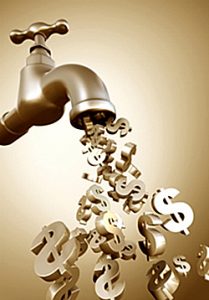 The second way to make money investing in real estate is through positive cash flow. This happens when you receive more money through rent, or some other creative income strategy, than you pay out in costs of owning or controlling the property. We also call this investing for income.
The second way to make money investing in real estate is through positive cash flow. This happens when you receive more money through rent, or some other creative income strategy, than you pay out in costs of owning or controlling the property. We also call this investing for income.
If you’ve read Steve McKnight’s bestselling book, From 0 to 130 Properties in 3.5 Years, you’ve heard how he began his investing journey 15 years ago.
Every property he initially bought had positive cash flow, but he also benefited from generic growth in the overall market. When he started, property prices were lower, rental yields were higher, and fewer people understood how to build wealth through property, so there was less competition with other investors.
But times have changed. The value of land has grown faster than the price of rent in most areas, resulting in a downward pressure on yields. Steve agrees in one of his most recent books, From 0 to Financial Freedom, How to Do It Today!.
“If I lost all of my money and had to start again, I’d do things differently. Not only because times and conditions have radically changed since I bought my first property for $44,000 in May 1999, but also because more than ten years and hundreds of property purchases later, I’m a lot wiser and more experienced.”
 In light of current market challenges, many investors jump to the conclusion that positive cash flow investment properties no longer exist in Australia today. Is this true? Should we throw in the towel and focus only on capital growth strategies? Or is it still possible to find real estate deals that make you money each and every month?
In light of current market challenges, many investors jump to the conclusion that positive cash flow investment properties no longer exist in Australia today. Is this true? Should we throw in the towel and focus only on capital growth strategies? Or is it still possible to find real estate deals that make you money each and every month?
To answer this question, I decided to phone a friend and profile an actual investor who is actively buying properties today. Adam Coates is based in Sydney. He bought his first investment property in December, 2002.
I’ve been coaching Adam through Steve’s Property Apprenticeship for about a year. Over that time I’ve walked with him through several of his more recent deals.
Adam was kind enough to allow me to interview him, so that he could share some of his investing insights gained over the past 13 years.
Q: G’day Adam. Could you Start By Telling Us How You Got Started Investing In Real Estate?
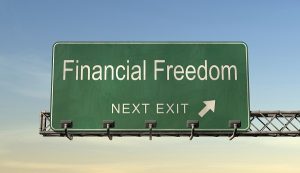 Sure. Investing in property was something I always wanted to do because I saw it as the key to financial freedom. I watched my wife’s parents invest in a few properties, and seeing them do well inspired me.
Sure. Investing in property was something I always wanted to do because I saw it as the key to financial freedom. I watched my wife’s parents invest in a few properties, and seeing them do well inspired me.
After my wife and I got married, we bought our first home, a small unit in the Sydney suburb of Parramatta. We began saving like crazy and benefited by some growth in equity in our personal residence. About the time we were finally ready to buy our first investment property, the house next door to us came up for sale. It seemed like a great price, so we bought it.
Q: How Many Investment Properties Have You Bought And Sold Since You Started?
A few years after buying that first investment property, we decided to upgrade our family home. Instead of selling the old place, we kept it as a rental property. So including that one, we’ve bought eight investment properties, and currently have a ninth under contract.
Over that time, we’ve only sold two investment properties: Our initial personal residence and that first deal we bought, the one right next door.
Q: Are There Any Of Your Investment Property Deals That You Regret?
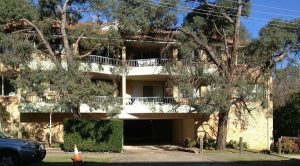 “Regret” is probably too strong of a word, but technically, we never should have purchased that first investment property next door to us.
“Regret” is probably too strong of a word, but technically, we never should have purchased that first investment property next door to us.
We did very little research, at least not the kind we know how to do today. And we purchased on the belief that you make money on the way in. In other words, we thought the key was to buy under value. We saw this property for sale at $30,000 below valuation and figured it was a bargain.
We held that property for ten years. That “bargain” was negatively geared every single year and over that time we saw no capital growth. After ten years, we had to make a decision. Do we cut our losses and sell, or hold on and see what happens?
At about this time, I started Steve’s Property Apprenticeship course. He taught me a simple, but very helpful truth. You must ask yourself, “Are you buying for growth or for income?” Or in our case, “If we continue to hold this property, will it be for growth or for income?”
After researching the area as Steve taught us, our opinion was that we were on the verge of capital growth in the area. And grow it did. Over the next 18 months, the value of that property increased by 60 percent.
So then we had another decision to make. Do we keep holding, or do we sell? Steve teaches that the time to sell is when you can increase your return by redeploying your assets elsewhere. We realized we could do better, so we sold.
This freed up the capital for us to buy two townhouses up in Logan, Queensland. Our research led us to conclude that the potential for growth was greater there, plus the yields were higher. These two townhouses are now bringing us $150 per week more than the Parramatta unit.
We learned some very valuable lessons in Steve’s course, and turned what could have been a regret into a success.
Q: I’ve Heard Many Say It’s Impossible To Find Real Estate Investments In Australia That Bring Positive Cash Flow. Do You Agree?
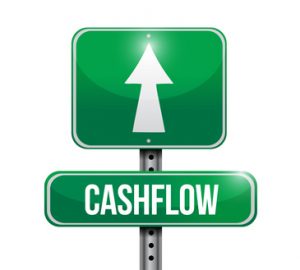
It’s just categorically not true. There are plenty of positive cash flow properties in Australia, if you know what to look for.
For example, fringe suburbs of major metropolitan areas can return 7 percent or higher gross yields, as do many dual income properties, like duplexes and homes with granny flats.
One advantage we have today is historically low interest rates. With interest rates below 5 percent per annum, even a 7 percent gross yield could potentially provide a net positive income for the year, and I’m not even allowing for depreciation.
I will agree, however, that they are becoming harder to find. In fact, you usually need to create them. That is, when you find the deal, it may not be positive cash flow until you can improve it in some way. This is especially true if you’re aiming for a 10 percent or higher gross yield.
Q: Adam, Can You Share With Us One Property Investment Deal That You’re Currently Working On?
I’ve just put a deal under contract that should return me a gross yield of 10 percent. This property is a little unusual and would probably scare off most investors, which is why I think I’ve been able to pick it up for a good price.
Q: How Did You Find This Investment Property?
I’ve been researching not only surrounding areas of Sydney, but also out of state major regional towns. This one came up in an online search. After running some quick back of envelope numbers, I decided it was worth investigating more. So I went there to have a look and do some more research on the area.
Q: You Mentioned That This Property Is A Little Unusual. What’s Unique About it?
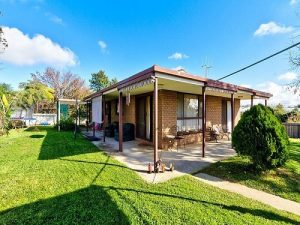 First of all it’s a hybrid commercial/residential property. The back half is a traditional three-bedroom home on land, but the front of the property is actually two separate shops that front onto the main road in the town.
First of all it’s a hybrid commercial/residential property. The back half is a traditional three-bedroom home on land, but the front of the property is actually two separate shops that front onto the main road in the town.
Second, and this is the clincher, it’s in a rural town. The population is a whopping 2,000! So, the potential threat is that if I wanted to sell, which I don’t foresee, it could take a lot of time.
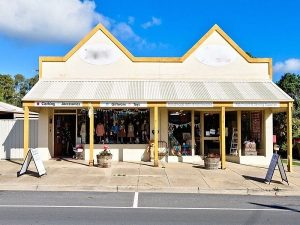 I plan to hold this one long-term, so I can’t imagine selling it anytime soon. Even if I was desperate for cash and had to liquidate real estate, I’d likely sell one of my growth properties before my income properties, and then work from lowest to highest net yield. In that case this would be one of the last I would sell.
I plan to hold this one long-term, so I can’t imagine selling it anytime soon. Even if I was desperate for cash and had to liquidate real estate, I’d likely sell one of my growth properties before my income properties, and then work from lowest to highest net yield. In that case this would be one of the last I would sell.
But it’s important to always have a Plan B. So the way I see it, any property that consistently returns near 10 percent, I’m relatively confident I could market it myself to other investors.
Q: Was There Positive Cash Flow Potential Based On The Listed Price, Or Did You Need To Negotiate A Better Deal?
 When crunching the numbers, I needed to factor in interest costs, which would vary based on how much the bank would lend me. One scenario, due to the commercial element, is a 70 percent maximum lend.
When crunching the numbers, I needed to factor in interest costs, which would vary based on how much the bank would lend me. One scenario, due to the commercial element, is a 70 percent maximum lend.
The banks are a little tighter when commercial tenants are involved. If somehow we end up able to borrow 80 percent, then I’ll consider it a bonus. Although my interest costs would be higher, I wouldn’t need to put down as much of my own money.
But straight off the bat, assuming higher borrowing costs with 80 percent finance and conservative rents on both shops, it was still returning over $250 per month, net. I did negotiate a lower price, which obviously increased the yield potential.
One of the commercial shops is currently let on a twelve-month lease, so I know that income is secure. What attracted me most to this property is that even if the second shop stays empty, the property is already cash flow positive. So, I’m not under pressure to get that other shop tenanted. Once it’s rented, that money just goes straight into my pocket.
Q: Steve Talks A Lot About The Value Of Finding Problems Or Market Inefficiencies And Providing Solutions. Does This Property Have Some Problems That Need To Be Solved?

Absolutely. While there is no hesitation in renting residential property, there is some concern about the viability of renting the commercial units.
The shops, although on the main strip through the town, are located about 50 meters beyond the majority of the other shops. This makes them far less attractive.
So, I need to find a creative way to make these shops more attractive. One idea I have is to convert the two shops to residential units. The vacancy rates in the town have been consistently below one percent for quite some time, so I know there’s solid residential rental demand.
Q: Since This Property Is Out Of State, Do You Foresee Any Challenges Managing Tenants?
 That is a question I often hear. My response is that a good property manager is the key. So if I have major problems, it’s because I did a poor job selecting the right manager.
That is a question I often hear. My response is that a good property manager is the key. So if I have major problems, it’s because I did a poor job selecting the right manager.
I don’t want to manage tenants, but I’m happy to liaise with those who do. They know the laws and regulations and they work for me.
So, they are an important part of the team that any investor needs to build. I simply call them, as I would a local property manager, and have them send photos of the property after their inspections.
I’m personally not one to make frequent visits to my out of state properties.
At most, I plan to make an annual visit to see the property myself, and strengthen my relationships with team members on the ground there.
Q: For Our Readers Who Might Be Looking To Buy Their First Positive Cash Flow Investment Property, What Would You Say Are The Top Three Things To Keep In Mind?
First, crunch the numbers. Second, do your research and due diligence. Third, crunch the numbers again!
It’s vitally important that you are aware of all the costs of holding a property, so you have a solid expectation of your net return. This is where most investors miss it. They don’t know how to plan and budget.
Q: Do You Have Any Examples Of Properties That Didn’t Pass Your Due Diligence Checklist?
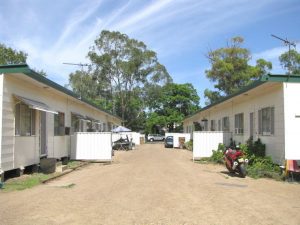 I recently came across a property in northern New South Wales. This one had five different units on the one title and was advertised as having an 11.4 percent gross yield.
I recently came across a property in northern New South Wales. This one had five different units on the one title and was advertised as having an 11.4 percent gross yield.
On the surface, it looked like a winner, but upon closer inspection, I found some significant potential ownership costs. After doing my research and crunching the numbers, even with all those tenants, I realized this one could have ended up negatively geared.
So, positive cash flow is all about the raw numbers, not just the anticipated gross yield percentage. You must work out how much actual cash will be coming in, and then going out of your account each month. The amount that stays in the account is your positive cash flow.
Q: One Final Question, Adam. You Mentioned That You’ve Picked Up Some Helpful Insights From Steve McKnight Along The Way. What Would You Say To Anyone Contemplating His Property Apprenticeship Course?
Anyone who is really serious about investing in property first must invest time and money in education. Steve’s course not only helped me develop a compelling reason why I wanted to invest in property, but also a systematic strategy of how to achieve my long-term financial freedom goal. This helped me to be much more focused when searching for deals.
The greatest practical benefit of the course was being equipped to conduct thorough research and due diligence for any property I was assessing. Not only has this given me a stronger confidence when buying, but I’m also now making more profitable decisions.
If you choose not to be trained by Steve, just be sure that whoever you’re seeking training from is not also trying to sell you a property deal on the side. I’ve found that many property-training programs are just a cover to make money off you in other ways. The great thing about Steve is that he’s purely an educator. The fact that this course has a nationally recognised certification is proof of that.
Comments
Trackbacks
[…] Take a moment to check out a few of the student testimonials here and here. […]
Got something to say? Post a comment...
You must be logged in to post a comment.





The most difficult one is to convince the bank to give the money to buy. What suggestion you have? Do you need to filing for 100s properties details when talking to bank?